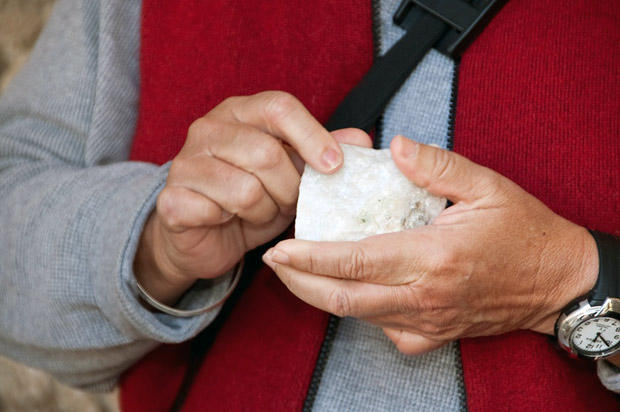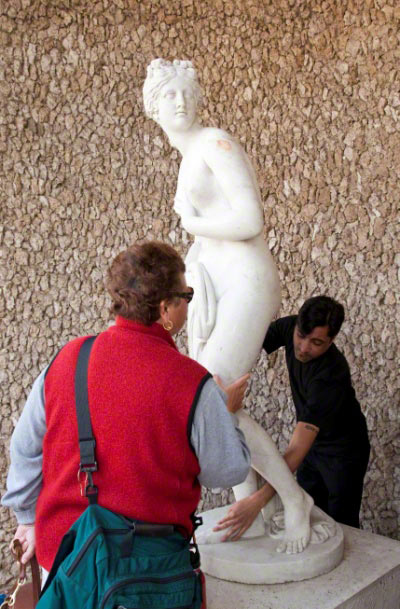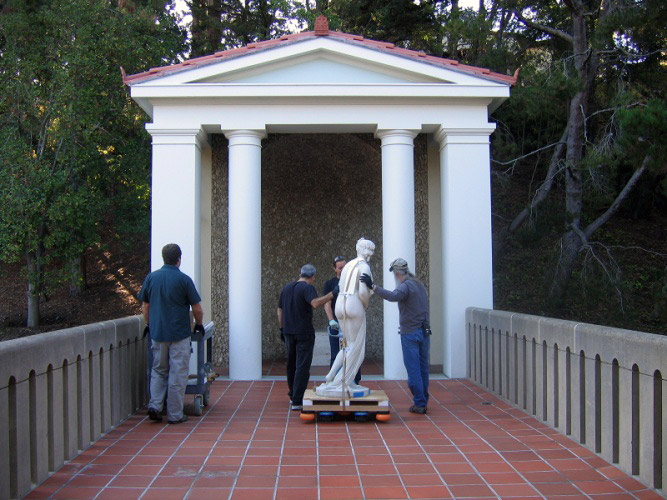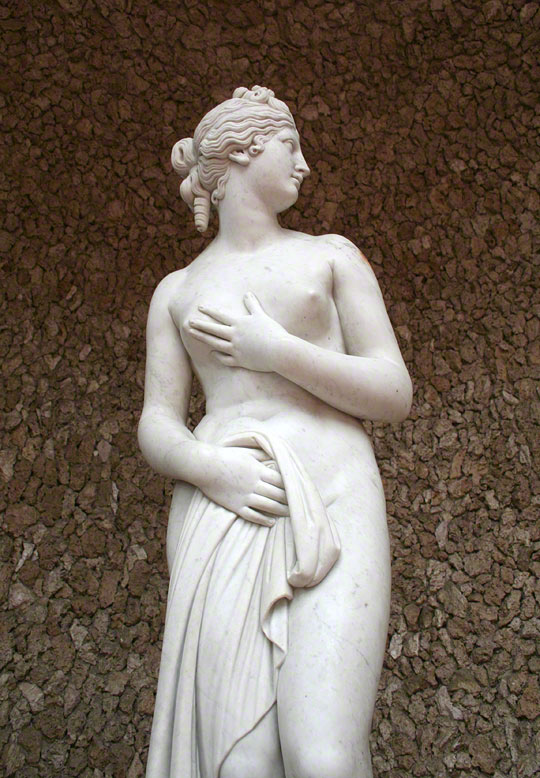
I wouldn’t have become a museum educator if I didn’t believe in the potential magic of an art museum. I’ve had enough experiences at the Getty Villa to know that I’m not crazy—that special experiences can be had with works of art. It may not happen all the time, but it can happen, and when it does, it’s often with results you least expect.
Three years ago, I was utterly stumped by the idea of teaching a group with vision loss. Art museums privilege sight over any other sense. Touch, the sense by which many blind and low vision individuals negotiate the world, is considered taboo and against proper museum etiquette. How would anyone without the ability to see create an experience, much less a meaningful one, in such a non-touch environment?
It took the task of a tour for blind and low vision groups for me to redefine the limits of what can happen in an art museum. One of the most important resources we have at the Getty Villa is a Touch Statue, which was installed near the far end of the Outer Peristyle in 2009 and is available to all Museum visitors.

Visitors explore the Touch Statue, a 20th-century replica of Venus after Antonio Canova. Below, installation of the statue in 2009

The Touch Statue is a 20th-century marble replica of Antonio Canova’s Venus (1820), and it’s the one statue at the Museum that we encourage visitors to touch. The idea is that touch allows you to experience things like texture and form, which are key components of what makes sculpture sculpture.

For blind and low vision visitors it is also the only way to experience sculpture at the Museum. The Touch Statue has explanatory labels in Braille and a raised line drawing that guide visitors in touching and provide historical information on the object and its architectural context.
Combined with other resources like the bronze Seated Hermes in the Outer Peristyle, and related artists’ tools and materials, we’ve been able to develop Touch Tours at the Getty Villa—guided tours specifically for the blind and low vision community.
Creating opportunities for an experience with art is such an important part of what we do. A week after leading a Touch Tour with a group from the Braille Institute, I discovered what staying power art could have.
During the tour, we’d explored the processes of bronze casting and marble carving: their deep history in antiquity as well as the tools and materials (raw metal and marble) that ancient artists would’ve used. Comparing the two techniques through touch was an exhilarating experience for the participants. Two of the participants were artists, a basket weaver and a sculptor. Considering another artist’s vision created a human connection that transcended time and language. And the fact they could touch marble in its natural form, and then the same stone marked by human imagination, brought them to appreciate sculpture in a new way—all without having to see the artwork or the materials.
I spoke to the group’s coordinator a week later. Even after they had left the Museum, they were still reflecting on their experience. They were still talking about sculpture, even imagining the sculptor of the Touch Statue at a quarry and wondering about the critical process of picking his block of stone.
It might be my job to teach visitors about the artwork in the galleries, but the truth is, it’s our visitors who educate me. By learning to teach those without sight, I’ve learned to teach everyone else that much better.





this is great! never thought about museums handling blind visitors. So cool!
where was the replica made? i know that it was installed in 2009 but it had to be made somewhere
Good question! This statue was carved in 1927 in Italy.
I teach art to the blind and visually impaired at Envision in Wichita, Kansas and have been considering asking the Wichita Art Museum if they would possibly participate in such a relationship with the vi community and their collection. I love hearing how we change the way we teach when we are exposed to the way the vi participants interact with art! Thank you for sharing!